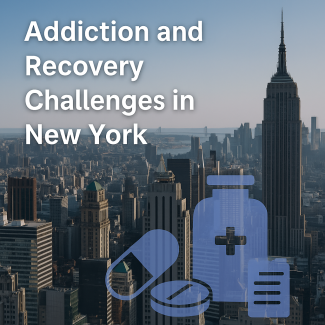Addiction and Recovery Challenges in New York: Community Needs, Policy Gaps, and Emerging Solutions

Addiction and Recovery Challenges in New York: Community Needs, Policy Gaps, and Emerging Solutions
By Benjamin Zohar, NCACIP – Moderator, Addiction Policy and Recovery in New York Network
Overview
New York State continues to face complex public health challenges related to substance use, mental health, and community reintegration. Despite strong leadership from the Office of Addiction Services and Supports (OASAS) and local county programs, many individuals still encounter barriers when seeking treatment, housing, or aftercare support.
Across New York City, Long Island, and the Hudson Valley, clinicians and intervention professionals report rising cases of co-occurring disorders, stimulant misuse, and alcohol relapse among young adults. Access to care often depends on insurance status, geographic location, and local program capacity — leaving significant service gaps between inpatient and community-based treatment systems.
Community and Policy Gaps
- Limited transitional housing: Many clients completing detox or rehab lack access to supportive housing environments, increasing relapse risk.
- Underfunded outpatient systems: Outpatient and IOP programs often struggle to meet demand, especially in rural and suburban counties.
- Insurance restrictions: Prior authorizations and coverage limits delay entry into treatment for individuals in crisis.
- Stigma and awareness: Misconceptions about addiction continue to prevent families from seeking early intervention or recovery support.
Emerging Solutions
State and community initiatives are beginning to close these gaps. Programs emphasizing Medication-Assisted Treatment (MAT), telehealth counseling, and family coordination are showing promising results. The SAMHSA Treatment Locator now lists over 1,500 licensed providers across the state, including specialized services for veterans, adolescents, and families.
Local interventionists and treatment navigators, such as those at Intervention New York, are collaborating with recovery centers and outpatient facilities to provide crisis planning, clinical placement, and ongoing peer recovery support. These collaborations help bridge the gap between emergency response and long-term stability.
Policy Focus for 2025
According to recent OASAS and public health updates, 2025 priorities include:
- Expanding MAT access through community health centers
- Developing standardized referral systems across counties
- Strengthening partnerships between harm-reduction and treatment programs
- Increasing recovery housing accreditation and oversight
These initiatives align with national efforts led by SAMHSA and the National Institute on Drug Abuse (NIDA) to integrate evidence-based treatment, behavioral healthcare, and public education into unified recovery systems.
Call to Collaboration
The path forward in New York requires cross-sector cooperation — among policymakers, clinicians, recovery coaches, and community advocates. Sharing local updates, case studies, and emerging solutions in networks like this one helps strengthen coordination and accountability across the recovery landscape.
To participate or share resources, join the Addiction Policy and Recovery in New York network on ISSUP.
References
- New York State Office of Addiction Services and Supports (OASAS). https://oasas.ny.gov
- Substance Abuse and Mental Health Services Administration (SAMHSA). https://findtreatment.gov
- National Institute on Drug Abuse (NIDA). https://nida.nih.gov
- Intervention New York. https://interventionny.com